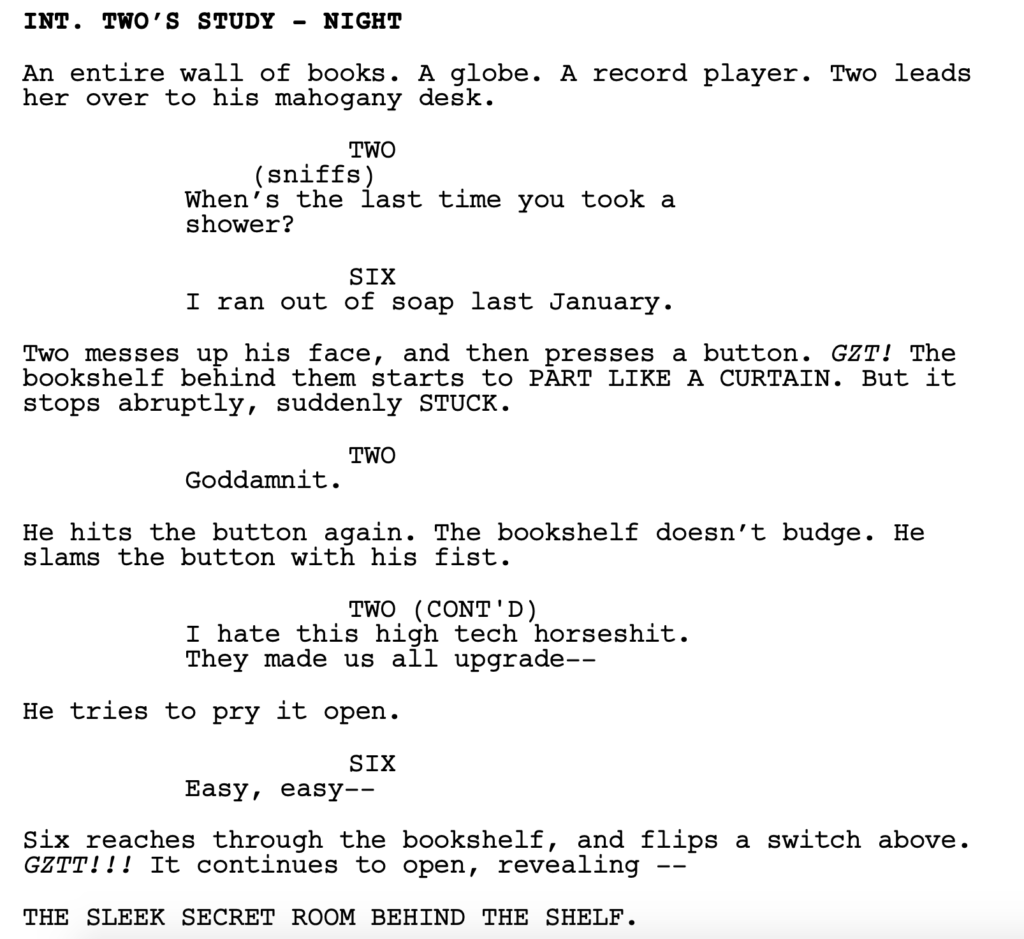Genre: Thriller
Premise: A year after her husband’s death, an adrenaline junkie rock climber finds herself being hunted by a serial killer during a canoe run.
About: This script finished in the bottom half of last year’s Black List. Screenwriter Jeremy Robbins did some writing on the TV show version of The Purge.
Writer: Jeremy Robbins
Details: 96 pages

These scripts are strange beasts.
They’re tailor-made for writing on spec because they’re simple, easy-to-understand, and effortless reads. You can basically keep every paragraph at 2 lines or less.
But they’re deceptively hard sells when it comes to turning them into movies. I just read a really good one recently for a consultation and I’ve been helping the writer send it out. And the note that I’ve gotten back is that it’s “too small.” More specifically I keep getting told that when it comes to action, audiences want that action to be bigger. They don’t want small action. They don’t want one person running from nature, or running from someone else.
So, for these to work beyond getting recognition as a script, they need to have some super marketable angle. A good example would be “The Shallows,” that script about the surfer on the private beach who gets stuck on a rock with a shark swimming around. The shark angle made that marketable.
But hey, who’s to say what anyone will fall in love with, right? Maybe there’s a rock-climbing production head out there dying to make a movie like this.
When we meet 30 year old Sasha, she’s climbing a rock face that would make Alex Honnold anxious. She’s doing so with her husband and I don’t think I need to get into specifics for you to know what happens next. Anybody seen Cliffhanger?
Cut to a year later, after her hubby, who’s name was Tommy if anybody cares, died, and Sasha has become the female version of Alex Honnold, riding around solo in a van, doing the things that adrenaline junkies do. But one thing she doesn’t do anymore is climb rock faces. She’s retired that sediment of her adrenaline-infused life.
Currently she’s about to do a 30 mile solo canoe ride through a very dangerous river. About a mile into the route, however, she notices something very wrong with her canoe. She pulls herself onto shore and sees that someone DRILLED HOLES into her canoe. What in the heck? An hour later, she’s heavily vomiting. Someone poisoned her water!
Sasha comes to the conclusion that while she was camping last night, somebody sabotaged her stuff. And it isn’t long before the saboteur shows up. It’s our Caucasian male villain, Ben, who either is a park ranger or pretended to be a park ranger when Sasha ran into him a day ago. And now he’s hunting her!
Eventually, Ben captures Sasha and makes her climb a rock face with her, before entering a hidden cave. It’s here where Ben keeps his victims, a sort of beautiful cavern with drawings on the walls that have to be thousands of years old.
To make sure she doesn’t escape, Ben handcuff-connects the two with a chain. But that doesn’t stop the feisty Sasha from trying. When he least expects it, Sasha makes a break for the exit, pulling the stumbling Ben along, then leaping off the rock face into the river below.
Ben is eventually able to subdue Sasha once more. But now they’re both injured and need to get medical attention. After deducing where they are, Ben calculates that the fastest way out of the gorge is up a nearby rock face that the two will have to free-solo to the top, connected by rope that ensures if one of them falls… both of them fall.
Today’s script is an interesting comparison piece to yesterday’s script. Because while I did like Apex, I didn’t like it as much as The Bee Keeper.
I asked myself why. Because today’s script is actually a lot more believable than yesterday’s script. I mean yesterday’s script was about bee keeping assassins who use pollen and honey as weaponry.
It goes right back to emotion. Emotionally, I cared more about the characters in The Bee Keeper than I did Sasha.
But why? The entire first scene shows Sasha losing her husband, the person she loves more than anything in the world. Why would I feel more emotion towards a bee keeper getting revenge for a dead neighbor than I would a grieving widow?
The first answer came to me quickly. Unlike in The Bee Keeper, there wasn’t a single reason to show the opening scene of Sasha losing her husband OTHER THAN to make us feel sympathy for her. The trick with mining emotion is that it cannot be obvious that you are manipulating the audience. And this was so so so so so obvious. “PLEASE LOVE MY MAIN CHARACTER! LOOK AT HER LOSE HER HUSBAND RIGHT IN FRONT OF YOUR EYES!”
The reason The Bee Keeper works better is because the opening scene doesn’t just mine emotion from Eloise’s death. It ALSO sets up the plot. Eloise loses money to this company. So that’s the company that the bee keeper goes after. That’s the advantage of doing 2 to 3 to 4 things in a scene, is that it makes the scene more relevant to the overall movie, and therefore less susceptible to looking like a blatant attempt to mine emotion.
It’s no different than when you have a lot of exposition to get out, so you write a scene that’s ONLY ABOUT THAT EXPOSITION. Every reader who reads your script knows you only wrote that scene to get all that exposition out because that’s the only thing the scene focuses on.
As a screenwriter, you have to learn to hide those things.
This goes back to my theory I was positing yesterday. If we’re not hooked emotionally, we’re not going to love your script. We might still LIKE your script. As was the case here. But rarely in the history of movies do people love movies that they’re not emotionally connected to.
The reason I still liked this script is because the technical execution was very strong. I particularly liked that the writer kept changing things up. For example, Sasha evades Ben for a while, then is captured by Ben for a while, then she tries to escape with Ben attached to her (something I’ve never seen before), and finally she and Ben have to work together.
Also, I thought it was clever how the writer exploited his premise. The hook here is the rock climbing aspect. And he gives us some fun rock climbing set pieces, the highlight of which was the free-solo climb with the two connected together so if one screwed up they were both goners.
The writer was also very good at creating suspense. Ben doesn’t just show up out of nowhere. We see a drone that Sasha doesn’t see 10 pages before he arrives. We experience the deliberately drilled holes in her canoe. A lot of writers don’t have the foresight or the patience to slowly build towards an arrival. They just want to jump to the good stuff! YEEHAW! And that’s not as interesting, in my opinion.
But like I said, these are weird scripts. They’re actiony enough to read fast on the page, but put them toe-to-toe with a film like Nobody and its cool-as-f**k bruiser bus battle and they feel small. And as much as I’d like to say I’m not one of those people, I do occasionally run across these “thriller in a forest” posters when I’m scrolling through Netflix or Prime and I think, “Ehhh… feels kind of small potatoes.”
Let me turn the question over to you guys. Do you watch these films? Or do you find them too small?
[ ] What the hell did I just read?
[ ] wasn’t for me
[x] worth the read
[ ] impressive
[ ] genius
What I learned: When you’re describing a character, try to find at least ONE VERY SPECIFIC THING that can give us insight into the character. Because if you describe a character too generally, like with one of these types of descriptions – “JOE, 27, is a bear of a man who looks like he’s had a rough life,” – we don’t get a good sense of what’s unique about that person. Check out how Robbins describes Sasha’s husband: “Inside the second sleeping bag is TOMMY (30s). A SF GIANTS BANDANA is wrapped over his face, a makeshift eye-mask.” Even without describing Tommy himself, we get a sense of this guy. He’s from San Francisco. He’s a sports dude. That’s telling me more than some generic cut-and-paste description that I see in 90% of all other scripts.
Finally! The Bee Keeper script is here!
Genre: Action-Thriller
Premise: When his elderly neighbor is duped out of her entire life savings by online scammers and subsequently commits suicide, a bee keeper goes on a rampage to take the scammers down.
About: Yeah baby! Bzzzbzzzbzzzz! We’ve got a spec script that sold for over a million bucks. We’ve got Jason Statham playing the lead. David Ayer just signed on to direct the film two weeks ago. This is the kind of script writers who want to make a big splash in the business should be writing. Tyler Marceca just made a million dollars for a fun action thriller, Stay Frosty. Shay Hatten blasted onto the screenwriting A-List when he wrote a fun action thriller in Ballerina. This is a very lucrative genre for a screenwriter. And if you want to study someone who does it best, read Kurt Wimmer’s scripts. They’re some of the easiest funnest specs you’ll ever read.
Writer: Kurt Wimmer
Details: 106 pages
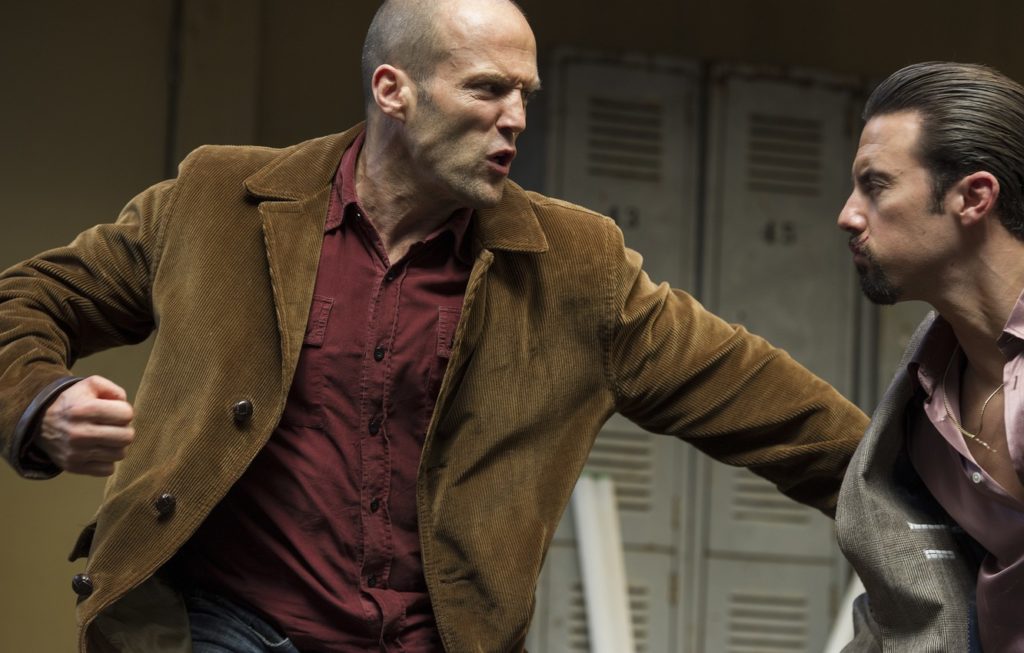
I’ve been really excited for this one.
Not only is it written by one of the most successful spec screenwriters of all time, Kurt Wimmer. It’s such a weird subject matter that my curiosity meter is off the charts. An action thriller…. About a bee keeper? Tell me more, please!
An old woman in rural Tennessee named Eloise is on her computer when she gets one of those spam warnings that most people ignore (“Your computer is infected. Call this number to fix it.”). Unfortunately, in an attempt to fix her computer, she calls the number. Within 5 minutes, her entire life savings has been stolen. That night, Eloise commits suicide.
The next day both her FBI agent daughter, Verona, and her reclusive bee keeper neighbor, Adam Clay, who she was friendly with, show up. After they both learn the truth, that a company located in Memphis called “Data Group” did this, Adam shows up at Data Group’s building the next day and burns it down.
Data Group, as it turns out, is a branch of a much larger corporation called Evermore Enterprises, run by the former director of the CIA, Westwyld. And when they find out some dude just burned down their building, they send four heavies to take him out. Except they do not “take him out.” They get taken out in some of the best action-fight writing I’ve seen in years.
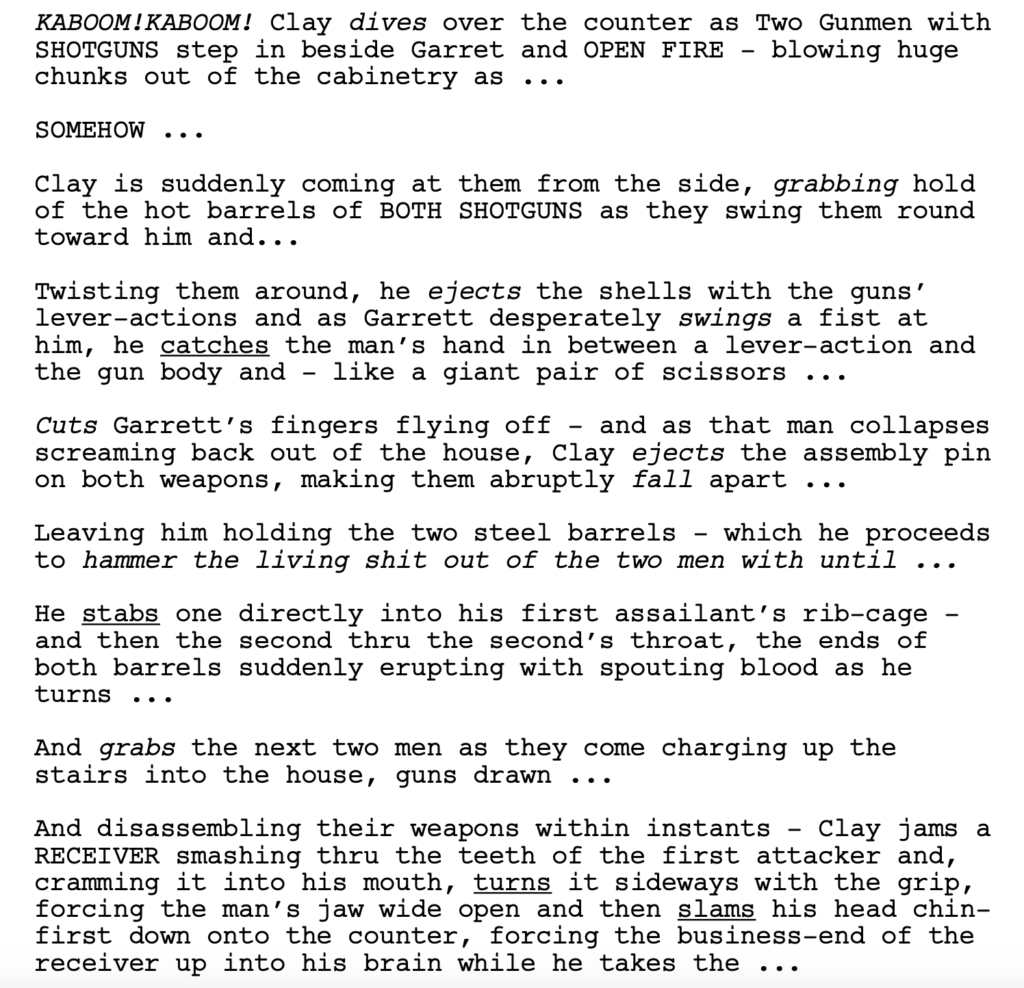
Clay then calls Westwyld and tells him he’s coming for him. It is then that Westwyld realizes he is not dealing with an ordinary man. He’s dealing with a “bee keeper.” No, not a bee keeper in the traditional sense. A type of secret agent that is so top secret not even the freaking president knows who he is. These beekepers are part of a larger “hive” who keep the country running by any means possible. I’ll let Westwyld explain…
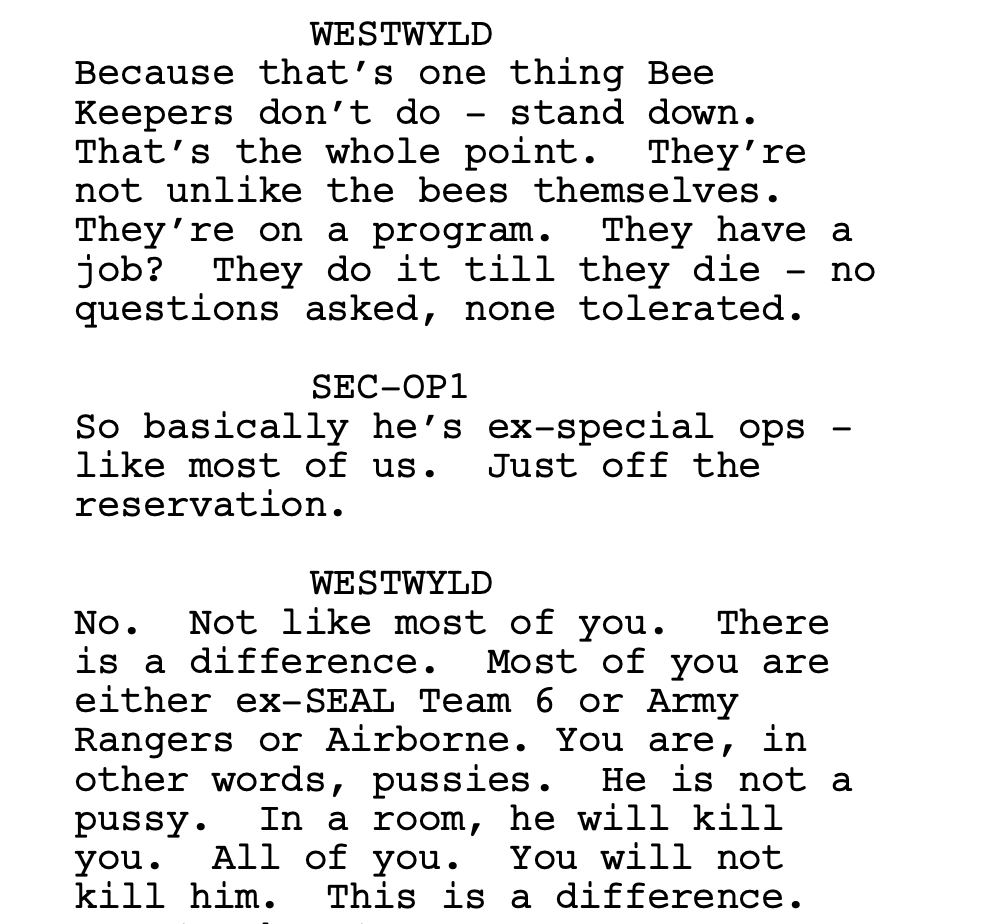
This forces Westwyld to ask for help from the Secretary of Defense! Who says that the only way to stop a bee keeper is with another bee keeper. Which they reluctantly agree to deploy. And this is where things get crazy, lol! When bee keepers fight each other, they use honey, they use bee puns, they use bee tactics. It is truly a marvel to behold. To say anything more about this script would be to betray the joy of reading it yourself. So find it and read it now! I’m sure someone in the comments can send it to you.
Hoooo-weee! I can’t remember the last time I forgot I was reading something. I totally forgot I was reading a script while reading Bee Keeper.
That’s because Kurt Wimmer is a master at writing spec scripts. And take note of the “spec” part of that declaration. There’s a difference between being great at writing a script and being great at writing a spec script. With a spec script, you have to keep a tighter grip on the reader. If you try to take your time and build something up for 15 pages without anything interesting happening in the meantime, you’ll lose the reader.
Wimmer understands this better than maybe any screenwriter in the business. Not only does he make sure each page keeps you reading. He makes sure before he’s even written a word that the concept and execution are going to create enough situations where he can keep you invested all the way through.
Beginner and even intermediate writers will decide to write a script with no idea if they can keep it entertaining the whole way through. They’re hoping they’ll figure it out “along the way.” Great screenwriters suss this stuff out ahead of time. Wimmer clearly did that here.
I don’t know why I’m surprised but I saw so many things here that were smart. For example, Wimmer does something really complicated in the screenwriting world with effortless ease. He has to make it make sense that Adam Clay will put his entire life on the line to get revenge on these people. And he has to do that through Adam’s connection with Eloise.
The problem is, he has to kill off Eloise quickly because she’s the inciting incident for the whole movie. Her death is what propels him to go on this journey. So he only has a brief amount of time to create a relationship between the two that emotionally resonates.
Complicating this is that you want to start these scripts off BIG. It’s an action-thriller. Starting with a character scene is not the best idea. So that was the puzzle Wimmer was challenged with solving.
What he did was he created this slow opening character scene between Clay and Eloise by inserting a problem – she had a wasps’ nest in her house. This allowed Clay, who’s a bee keeper, to come take care of it for her.
Now one of the tricks you can use to make a slow scene interesting is teaching us something interesting during it. Which is what Clay does. He explains what’s going on with the wasps. He tells us that wasps destroy beehives. Which is why it’s best to terminate them. We show him do some very technical interesting things to destroy the wasps’ nest, allowing us to both learn something cool and establish a relationship between these two so that we understand why he goes after the bad guys later.
On top of all this, we’re learning who our hero is. What he does.
The best scene-writing, especially in the first act, does multiple things at the same time. And Wimmer is doing that on expert-mode here. But he’s not just achieving that. He’s achieving it invisibly. We don’t see any of the mechanisms that are creating this effect because they’re seamless and invisible. That’s great writing.
He also does something really clever with the bad guys. Sometimes we can get lost in trying to create an interesting bad guy. But you can make that job a lot easier on yourself by doing what Wimmer does here – creating a villain with “built-in hate pedigree.” The villain is a scammer (everybody hates scammers) and not only that, but they target the elderly (everybody hates people who take advantage of the elderly).
So before we’ve even met our scammer, we hate him. And that does SO MUCH OF THE WORK FOR YOU when you write the script. Because if we hate the villain, we’ll almost want to keep reading to see them go down MORE than we want to see our hero achieve his goal.
I can’t emphasize this enough. The big secret hack when it comes to writing great screenplays is to make the reader feel EMOTION. Once you have a reader emotionally invested — actually, hold up, let me think about how to phrase this…
You know how when you meet someone who you really really like and want to be with? All you can think about is them and being around them? That’s because you’re emotionally hooked on that person. They’ve triggered you on an emotional level.
It’s the same idea with a screenplay. Just like you can’t convince a person to like you logically, you can’t convince a reader to like a script because you’ve done everything the proper way it’s supposed to be done.
You hook the reader by making them feel something. As strong as you can make them feel it. And we feel it here immediately when we have this nice old lady get taken advantage of by these terrible people. And we’re in! That’s it! We’re in. We want to see that person go down. Which is why this script works so well.
The rest is gravy. It’s a fun ride where this guy tries to kill the bad guys.
The only thing I didn’t like about this script was the idea that there was no recourse for someone illegally jacking into your bank account and transferring all of your money out of it without your permission. Especially when you consider that the woman’s daughter was a federal agent! Talk about kicking the hornet’s nest. The FBI would be able to take this enterprise down within 72 hours.
So I didn’t like that. But crazy enough, the writing was so darn amazing that I didn’t care. It was such a fun exciting and FUNNY ride. I loved this quirky concept of a bee keeper taking the bad guys down. It was so different. And the mastery of Wimmer just made it a dream read. Every screenwriter should read this script to see how to make their own scripts read. It’s truly impressive stuff.
[ ] What the hell did I just read?
[ ] wasn’t for me
[ ] worth the read
[x] impressive
[ ] genius
What I learned: This is a little dialogue trick I’ve learned that always works in scripts like this. The formula goes something like this. Your hero approaches one of their targets and runs into some foot soldiers (guards, heavies, in this case, security) and the foot soldiers ask what your hero is doing here. There’s a tendency to think logically about how your hero will answer that question. They might say, “I have an appointment here and I’m late.” Maybe he tricks them by calling a fake number and letting them talk to the person to “confirm” that he indeed has an appointment. But where’s the fun in that? Instead, when Adam Clay goes to the Data Group building and encounters security outside and they suspiciously ask him what he’s doing here, he responds, “If this is Data Group – the call center – I’m going inside. I’m going to burn it down.” In other words, have your hero say EXACTLY what he’s going to do. You can do this anywhere. If you’re writing a movie in the 1700s and a William Wallace like character walks up to the castle and the guards say, “What do you want?” “I’m planning on walking into your castle here, heading up to the king’s throne room, and gut him before cutting off his head and tossing it out the window.” I’m telling you, it works pretty much every time.
The team that brought us Arrival, Ted Chiang and Eric Heisserer, is back with an adaptation of another one of Chiang’s stories.
Genre: Drama/Light Sci-Fi
Premise: After being released from a mental hospital, a brilliant mathematician comes up with a theory that could destroy the entire mathematical field.
About: This project just came together recently. It reteams author Ted Chiang with Eric Heisserer, who adapted his short story, The Story of Your Life, into the surprise hit sci-fi film, Arrival. Heisserer will be producing this time around. Henry Dunham, who directed the super-interesting (and killer script), “The Standoff At Sparrow Creek,” will be adapting and directing. This comes from a story that Chiang wrote all the way back in 1991. You can read the short story for yourself here.
Writer: Ted Chiang
Details: 5500 words (for reference, a screenplay is a little over 20,000 words)

I have to give it to Eric Heisserer. He’s the one who saw something in “Arrival” that no one else did. Because when you read Ted Chiang’s stories, it is not an effortless experience. His stories tend to be vague, metaphorical, and feelings-based rather than having some clear plot that one could easily sculpt a feature film out of.
That is, without question, why we haven’t heard of anything from Ted Chiang since Arrival. As soon as that movie became a hint, Hollywood scoured through all of his short stories, of which there are many, and came away with bupkis. They just couldn’t find anything.
That’s why this development is so interesting to me. For one, it says that if there’s one person who knows how to figure Chiang out, it’s Heisserer. He’s the guy who can get into his head and know how to bring one of these weird stories to life. And two, this is one of Chiang’s earliest short stories. He wrote it all the way back in 1991. That implies that maybe this is one Hollywood missed when they went digging into Chiang’s work – a gem just waiting to be plucked and sold at Sotheby’s for tens of millions of dollars.
We shall find out together if said belief is true.
Our story follows a 32 year-old mathematician named Renee, who’s just been released from the mental hospital for unknown reasons. She heads back home with her supportive husband, Carl, and immediately gets to work on a mysterious new mathematical theory.
The tale is told in mini-chapters roughly 250-500 words long. Between each chapter is a history lesson on how math has evolved throughout the centuries. A recurring theme in these “Did You Know?” snippets is the idea that arithmetic has never entirely been proven infallible.
Back at home, Renee, for whom happiness is so foreign it appears she’s never so much as giggled in her life, spends the majority of her time in her office, working on this math theorem. Carl, in the meantime, starts to wonder if he actually likes his wife anymore. I would counter that by asking Carl why he liked Renee, you know, in the first place.
Around this time, we get some odd backstory that Carl was once in a mental hospital in his early 20s as well! And Renee had been there for him, nursing him back to health after he’d tried to commit suicide. I think the point here is to create this dynamic by which Carl can’t leave Looney Renee since she was there for him during his time of need.
I’m sure you’re all wondering what this theorem is that Renee came up with. My decision to create some suspense before telling you is far more of an attempt to entertain the reader than anything I read in this short story.
The theory Renee proves is that all of arithmetic is false. She has proven that the number 1 can equal the number 2. Not only that, but that any number can equal any other number. And, therefore, there is no such thing as math. Everything we have built our world around is false. Or something. The End.
 Amy Adams completing the band getting back together?
Amy Adams completing the band getting back together?
Sorry.
I couldn’t hide my disgust for this story in the summary.
Here’s the thing. I’ve read so many of these “the world is the universe is math is numbers equals equations that kind of sort of explain the meaning of life” stories and they never ever deliver. Because they can’t.
You’re not going to be the writer who figures out something about math that nobody’s ever figured out before and then lay it out in a fashion that is going to be anything other than vague, frustrating, and, ultimately stupid. Go watch Interstellar if you don’t believe me.
I guess the question is, does Heisserer plan on using Division By Zero as the starting point of an idea or the idea itself? I would posit that he approach it as a starting point. Because two people fumbling around their house talking about mathematical equations and also remembering suicide attempts isn’t compelling storytelling.
What I’m hoping for is that this is the kernel for a much bigger story Heisserer has in mind. Because if you extrapolated someone disproving math to affect the entire world, there might be a movie there – another “thinking man’s sci-fi movie” like Arrival was.
For example, maybe this is a mathematical proof that, if it was released into the world, it would cause complete chaos, since no form of math matters anymore. But let me stress that nothing like that was ever mentioned in the story.
In fact, in the short story, Renee publishes her proof and a bunch of mathematicians collectively shrug their shoulders. That was one of my biggest problems with the story. There was zero stakes. Who gives a rat’s behind about some proof if it doesn’t affect anything??
But again, Heisserer might already feel this way and have plans to fix the issue.
For those wondering what makes a short story “adaptable,” there are two questions you want to ask yourself. 1) Should the story be adapted? This is divided by zero into two secondary questions. A) Is the concept good? And B) Are the characters worthy of building a movie around? The second question is, 2) Do you have a good angle to adapt the story into, something that can fit nicely into a feature-film structure?
So let’s quickly answer these questions. Should this story be adapted? The concept of disproving all of math has potential. So I’d say, “Maybe.” But there are zero characters in this script. Renee is way too harsh to be anything other than hated by audiences. And Carl’s just boring. So Heisserer would need to completely rewrite these characters.
Finally, is there an angle here? Again, the “math isn’t real” thing has some potential but I’m not sure I see an angle into it. You could go the stupid route of the theorem being placed on a thumb drive and everyone’s after it, some to expose it, others to keep it hidden.
You might be able to do something like Margin Call meets Don’t Look Up where we watch this theorem work its way up the mathematical world hierarchy, getting to bigger and more influential mathematicians, each of whom are terrified by the prospects of the theorem getting out and what it would lead to.
A third option – and I suspect this is the one that may have attracted Heisserer to the story – is to go the A Beautiful Mind route. There’s some stuff in the story about, is Renee going crazy or not? I suppose you could shoot for the Best Actress Oscar with that. But you’d need to find a way to make Renee at least tolerable. At the moment she’s about as relatable as a Pythagorean theorem.
In conclusion, this feels like an “almost idea.” It’s one of those ideas where you think, “Yeah, there’s something interesting in there. But it doesn’t add up to anything.” And yes, I just went there. Because 9 minus 5 still equals 4 so why not? :)
[ ] What the hell did I just read?
[x] wasn’t for me
[ ] worth the read
[ ] impressive
[ ] genius
What I learned: Despite what I’ve said today, I do think that you can mine short stories for great concepts even if the execution of the story sucks. We’re all just searching for that great idea. So if you like the core of a story but not the rest, get in touch with the writer and see if they like your idea of changing it. Remember that one of my favorite shows, Into the Night, about a group of people on a plane trying to outrun the sun, was based on the very first page of a 400 page novel and nothing more. Most writers want to see their stuff turned into TV shows and movies so the smart ones will listen to you.
What I learned 2: Avoid repeating yourself. For example, Renee attempted suicide and stayed at a mental hospital. Later we learn that Carl, when he was younger, attempted suicide and stayed at a mental hospital. Whenever the same things happen to your characters in a way that’s not necessary for the plot to work, it reads as lazy. Like you couldn’t think of anything original for the other character so you just copy and pasted. It seems as if Chiang was trying to create a dilemma for Carl in that Renee once helped him out of this problem so it is his duty to help her out of hers. But you could’ve easily achieved this by creating a separate tragic event that required Renee to help Carl. Maybe he lost his sister or something and she helped him through it. You don’t want or need to use the exact same experience.

As a kid who grew up on Star Wars, and who loves the original Star Wars more than anything, you would think that A New Hope would be the most memorable movie from my childhood. But that actually isn’t true. Both Empire Strikes Back and Return of the Jedi were more memorable.
The reason for this is, Star Wars began a new expectation in Hollywood that, with each new blockbuster film, you were going to see things you had never seen before. And when I went to those sequels, that’s exactly what happened. I saw AT-AT walkers and tauntauns. I saw aliens with lobster heads and speeder bikes shooting through gigantic trees.
Back then, Star Wars was the defining franchise for Hollywood’s new mantra: GIVE THEM SOMETHING NEW AND FRESH. Every movie that had aspirations of being a hit had to give audiences something genuinely new. It’s why Jurassic Park did so well. It’s why Men in Black and Independence Day and The Matrix and Aliens did so well. Hollywood operated off of this idea that why would someone see a movie if all you were going to give them was something they’d already seen?
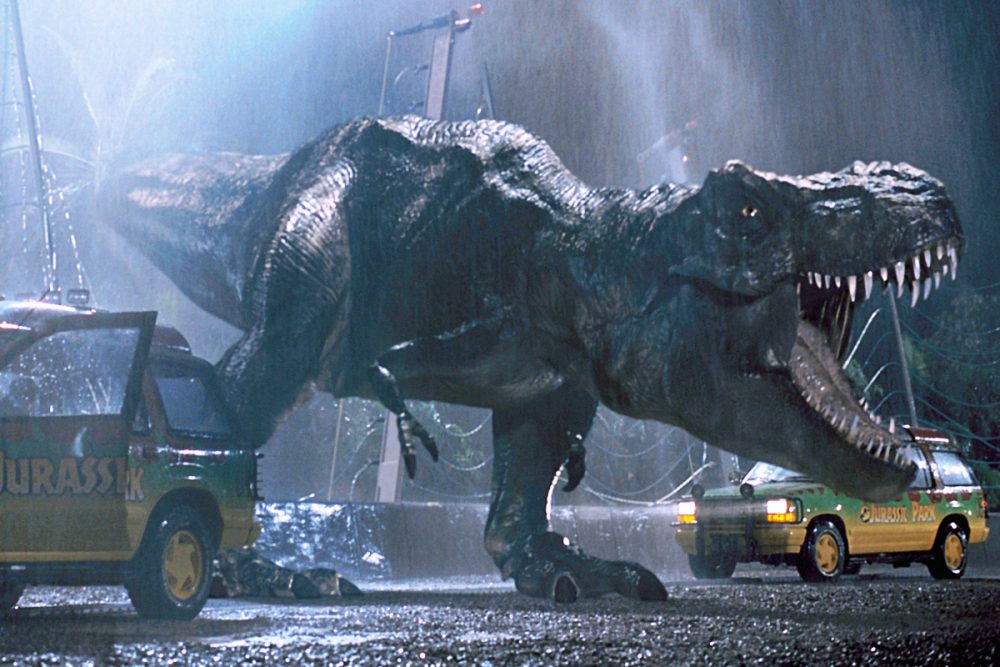
But somewhere around 2005, when comic book movies started to take over and special effects companies were able to create anything you could imagine, it all of a sudden became a lot more difficult to give audiences something new. Once you have a man in an iron suit fighting a giant green monster in the sky or five-story tall robots hurling each other into city buildings… what can you really show audiences at that point that they haven’t seen?
Marvel realized that this was going to be a problem. Whether intentional or not, they had opened up Pandora’s Box. How do we tempt audiences to come to theaters when we’ve already given them everything? They’ve come up with a temporary solution. More superheroes. You cram more spidermen, more Avengers, and more surprise guest caped crusaders into your flick, because, technically, you are still giving audiences something new. You’re giving them more superheroes to play around with.
And Marvel has a quasi stay of execution since they now own 20th Century Fox. People are going to be excited to see the X-Men hanging out with Thor. They’re going to be excited to see the Silver Surfer cutting a jib with Starlord. They’re going to love when the Fantastic Four goes on an adventure with Spidey. But eventually, even that will peter out. At a certain point, people are going to say, “What’s new? What’s next?”

I think about this a lot because you – as in you, reading this article right now – are the solution to this problem. It will be up to you to come up with the next big thing. The question is, is it possible to come up with the next big thing anymore? Is it possible to shock readers anymore? Is it possible to show them something they’ve never seen before?
As someone who reads pretty much everything, I can’t remember the last time I read something totally fresh. I’m not even talking about the whole script. I’m talking about one set piece I haven’t seen before.
There are scripts that are KIND OF unique. Colin Bannon, who wrote yesterday’s script, for example – he wrote a script about ultra marathon runners who participate in a death race where an evil mythological creature kills the runners one by one. Have I ever come across that specific concept before? No. But I’ve read plenty of scripts where people get killed by a creature in the woods.
Which leads us back to the question, can writers come up with anything truly new? Like an AT-AT Walker attack on a snow base in 1982?
Probably not. But that doesn’t mean we can’t still write movies that wow a reader or an audience.
And by my estimation, there are still two ways to do that.
There’s a way for the ultra-talented screenwriter. And there’s a way for the workhorse screenwriter.
For the ultra-talented screenwriter, the answer is A UNIQUE VOICE. Back in the 90s, concurrently with all these big Hollywood movies that were giving us stuff we’d never seen before, the indie scene was also giving us stuff we’d never seen before, but not through big expensive effects, like dinosaurs. But rather through their own unique lens. Tarantino, Paul Thomas Anderson, Spike Lee, Charlie Kaufman, Wes Anderson. They would lead us into the 2000s where we got Diablo Cody, Alan Ball, Alfonso Cuarón, M Night, Edgar Wright, and Jordan Peele. These writers showed us the world in ways we had not seen on film before.
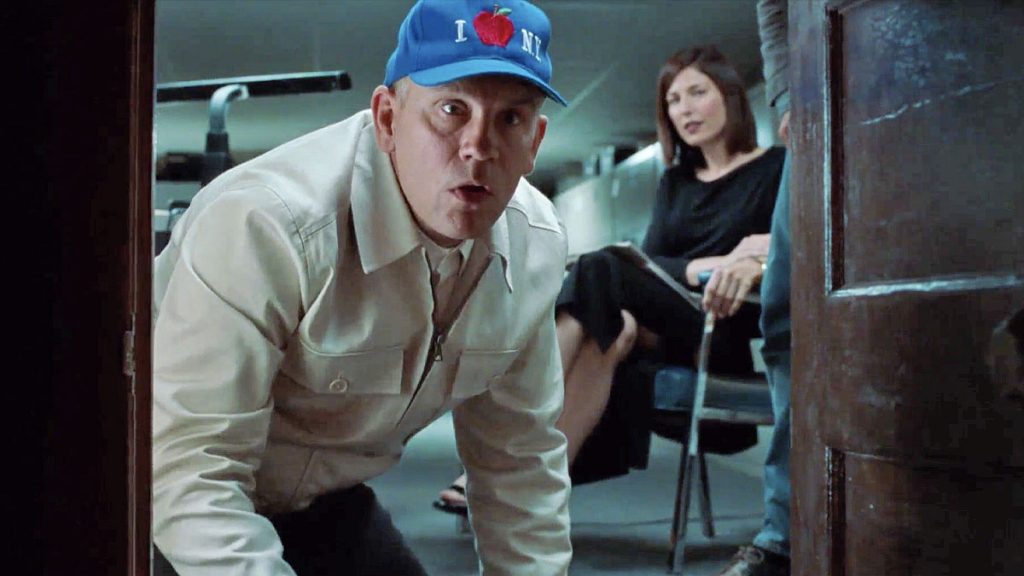
You can’t really strategize a voice. Your voice is inherently yours so you can’t change it around. But voice tends to break out when it’s different from what we’re used to seeing. That’s the whole point of today’s article. You’re giving them something new. So if you’re writing “male romantic comedies” at a time when Cameron Crowe was the biggest screenwriter in the world, your unique voice probably isn’t going to be appreciated, since there’s already a strong voice dominating that sub-genre.
But nobody knew what hit them when Charlie Kaufman started getting movies produced. We’re in John Malkovich’s head?? What the hizell is going on right now??? Ditto Diablo Cody. We hadn’t heard heightened dialogue that fun and lyrical since John Hughes. Nobody else was doing that at the time.
Fortunately, if you’re one of the lucky lottery winners who have an industry-changing voice, you don’t need this article. You’re probably going to be okay. So let’s switch over to what the workhorse writer can do.
First off, like I said, you should still be trying to come up with new ideas. Whether it be concepts or set pieces or even an idea for a scene that’s never been done before (the opening sequence from Promising Young Woman, where the prey shockingly becomes the predator, for example). The more “new” you can get into your script – even if it’s not world changing new like an Old West bar full of aliens, you should include it. Cause all those little *slightly new* things add up.
But here’s where you should really be focusing. Because this is the hack that will allow you to write even a traditional story that people fall in love with.
The way that the workhorse screenwriter can circumvent the blueprint is to write a great main character into their script. And let me explain why. When a reader falls in love with a character, they don’t care that much about anything else but following that character around and seeing what happens to them.
This is the secret sauce that will work now and until the end of time. It is the reason why, even though we in the movie business can no longer provide audiences with things they’ve never seen before, we can still make them feel things. We can still jack into their emotional circuit board and take them on a ride that will feel just as powerful as their last relationship. That will fill them with just as much love and pain as the trials and tribulations they go through with their own family. And when they finish that ride, they will feel a much deeper connection to that film than all the CGI dinosaurs combined.
Okay, Carson, that’s great. Write a great character. Duh. That’s still really hard to do, though.
It is hard. But, at this point, it’s way more doable than trying to create something nobody’s ever seen before.
So let me give you two recent films that achieved this that you can learn from. The first was Joker. And the second was Everything Everywhere All At Once.
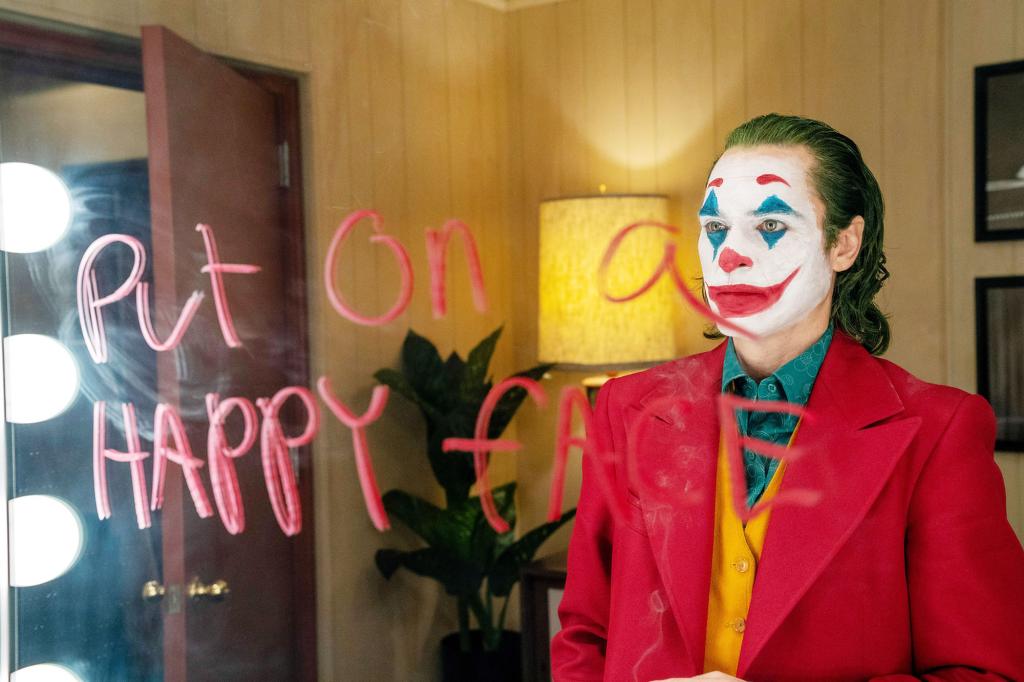
Joker, more than any movie in the last ten years, proved that if you focus on creating a really compelling main character, you don’t need anything else to be new. And you don’t need big fancy effects either.
The reason Arthur (the Joker) worked is because the movie made him sympathetic – someone who was picked on and made fun of wherever he went. He had a mental condition, which created more sympathy. We liked him because he took care of his mother. But also, we saw how difficult that was for him and how it shaped him (limiting his opportunities to create a social circle), adding complexity. He was an underdog in his pursuit of the pretty girl who lived in his building. So we rooted for him.
But here’s where the character took off. Cause if you stopped there, you could’ve placed that character in a romantic comedy. The reason the character becomes iconic is because he hates the world and he starts to have a severe mental breakdown. Going so far as wanting to hurt innocent people.
Severe contrast within a character (you’ve got this really good stuff and this really bad stuff swirling around in the same body) is often what makes them compelling and interesting to watch. And Arthur Fleck had that in spades. We wanted to watch him to see what he did because what he did was usually interesting.
Everything Everywhere All At Once was a completely different beast in that it was an ensemble piece and it actually was giving us bits and pieces of “new” (I mean, there’s a universe where everyone has hot dog fingers). But where the film really excels is in its characters.
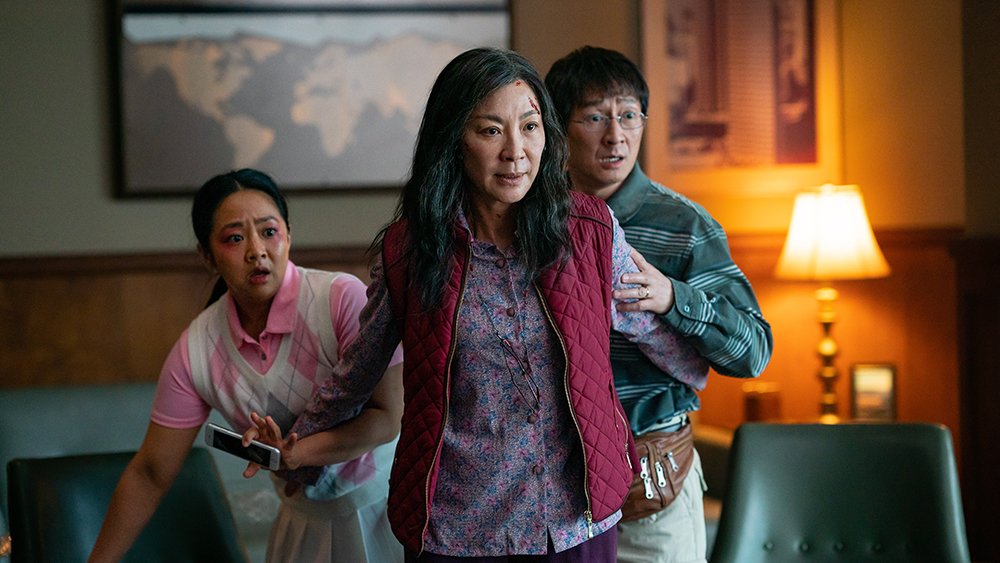
The mother, Evelyn, has this really complex backstory where her father warned her not to marry this wimpy man. She ignored him and did anyway. And it turns out her father was right. Her husband never amounted to anything and, because of this, she’s 60 years old and managing a crappy laundromat that’s being held together by rubber bands and popsicle sticks.
She’s got a daughter who’s gay and it’s really really hard for her to accept that. If you slide over to the husband’s storyline, he loves his wife more than anything and is dealing with the fact that she wants to divorce him. She’s loveless. He’s hopeless. The daughter is miserable. And all of that stuff is rooted heavily in a backstory that was extensively reserached because it had to be since the movie would explore hundreds of different versions of that same backstory in other universes.
The climax of the movie is not a big fancy Marvel showdown but rather, by the Daniels’ (the directors) own admission, an “empathy fight.” It’s this family trying to connect for the first time in years.
I bring this example up because it would’ve been easy to write paper-thin characters and just focus on the fun kung-fu and multiverse gags. By making sure the characters were all complex, it turned a movie with a wacky concept into something that will stay with you for the rest of your life.
THAT’S WHAT YOU NEED TO BE DOING.
Create characters with interesting well researched backstories, who have intense unresolved inner conflict, and who also have unresolved conflict with other characters in the movie, who, to the best of your ability, you give the same fully-fleshed out treatment to.
Cause if you can write characters we love (the husband in Everything Everywhere) or are fascinated by (Arthur Fleck), those characters will get their hooks in the reader/audience, and everything else about the script becomes so much easier to pull off.
To summarize, if you’ve got that idea that nobody’s seen before, great. Write it. If you’ve got that set piece or scene that nobody’s seen before, great. Write it. As I’ve said before, producers will buy a script if it has one amazing “going to look great on screen” movie scene. If you don’t have either, try to include as much “kinda new” stuff as you can in your script. Cause it adds up. Finally, even if you don’t have a single new thing in your script, you can still write something great if you have a great main character or a cast of extremely strong characters. Unless you’re the next David Lynch, character-creation is your biggest weapon as an unknown screenwriter. Now go use it!
*********************
SPECIAL DEAL!!!!
Two script consultation slots just opened up this week. So I’ve decided to offer two SUPER-DEALS. 4 pages of notes on your feature or pilot for just $199. That’s 60% off the feature rate and 50% off the pilot rate. I know that half of you will be asleep when I post this, so here’s what I’m going to do. The very first person who e-mails me RIGHT NOW at carsonreeves1@gmail.com the word, “DEAL,” gets the first deal. And then, whoever e-mails me first starting at 9am Pacific Time tomorrow (Thursday), gets the second deal. This is a rare opportunity. If you’re someone who’s always held back because my consultations don’t fit your budget, this is the time to strike!
*********************
John Wickan?
Genre: Action/Supernatural
Premise: When an elite assassin is sent to the haunted Harz Mountains in Germany on an extraction job she intends to be her last, she quickly learns that the local legends about witchcraft are true and must face a sinister supernatural threat.
About: Colin Bannon is quickly climbing the Hollywood literary ladder, unleashing tons of big idea scripts into the machine, which is gladly snatching them up. He already sold that Squid Game-inspired spec about a secret Russian marathon where only the best runners are invited, and then killed off over the course of the race. Will John Wickan be his next sale?
Writer: Colin Bannon
Details: 112 pages
 Peacemaker’s Jennifer Holland for Six?
Peacemaker’s Jennifer Holland for Six?
You gotta give it to Colin Bannon. The guy is a high concept generating machine. We already looked at one super high concept 2021 Black List entry of his. This is the other one.
While I love Bannon’s infatuation with big ideas, I think he gets a little too crazy as his scripts go on. They feel like chaos. And it becomes harder and harder to see through that chaos to find the story.
There’s something to be said there about writer blind spots. Every writer has them and I used to think that if you told a writer over and over again that Issue X was a blind spot of theirs, they’d eventually fix it.
But an argument can be made that every writer *is* their blind spot. Has Christopher Nolan ever shored up his excessive exposition? Is Joss Whedon capable of not writing quippy dialogue? Is it possible for Judd Apatow to write a movie that stops at 3 acts?
I remember one of my giant weaknesses that never seemed to go away was when I got a man and a woman in a scene — didn’t matter the genre — it would always end up reading like romantic comedy banter. Even though I *knew* it shouldn’t read like that, it still read like that. The price of growing up in the Romantic Comedy Golden Era I suppose.
While these weaknesses tend to be a part of our “voice,” I do think that, as an artist, you should always be trying to improve, and one of the best ways to improve is addressing recurrent criticism.
With that in mind, let’s check out The Devil Herself.
Six is an assassin in her 30s who lives in the middle of nowhere for reasons we’ll find out have to do with her former organization wanting to kill her. But Six is tired of living a life of seclusion and wants to move to “The Island,” a place where “Numbers” go to retire (and subsequently, can’t be assassinated).
So she catches up with an old friend, Two, who tells her that he can get her to the Island, but she’ll have to do something for him first. A 7 year old girl has been kidnapped by some creepy people who are currently holding her in a church on the highest mountain in Germany. Go get her, return her to her mom, and you can go to the Island.
Six zips up the mountain, charges into the church, and finds some crazy Pagan ritual going on, the center of which is the young girl, Petra. Six starts firing away like Rambo, scattering the witches, which include the freaky High Priestess, grabs Petra, and drives her back to her mother.
Just two minutes into the reunion, there’s a knock on the door. They answer and and see Aunt Alice. Except Aunt Alice looks a lot like the High Priestess. Six scans her up and down. Is it the High Priestess?? It’s hard to say without all the blood and robes she had on before. But Six wants to get to that island so she heads out.
She doesn’t get a mile before slamming on the breaks, turning around, and burning rubber back to the house. By that time, the entire family is dead or near-dead, and “Aunt Alice” and Petra are gone. Six hurries after her, shooting Aunt Alice’s van off the mountain with a sniper rifle, then going to retrieve Petra from the wreckage (yes, you read that right).
Once she has Petra again, she realizes that those crafty witches were able to put a demon in her. This means Six will have to transport Petra to a White Magic expert who can exorcise the demon from the girl. Complicating matters is that Six’s old boss, One, has found out where she is and sent every assassin in the area to kill her. Talk about a rough day at work!
Last week I lamented the creative choice to build a show around a man who strangled a goose. This week says hold my beer, and also my shot of tequila, and also this liquor store I just happen to be carrying in my backpack, and proceeds to start with a woman shooting dead a baby deer.
Why do I get the feeling Bannon will not be called in for Disney’s inevitable live-action remake of Bambi?
Bannon: “Okay, so hear me out. We start on Bambi right? And she’s sipping water from the lake. It’s serene. There’s not a cloud in the sky. And then BAM!!! An alligator bursts out of the water and decapitates Bambi with one chomp of his mouth. What do you think? Cause it doesn’t have to be an alligator. Maybe Bambi just falls into the lake and drowns? That could be good?”
Okay, so Six shot the fawn by mistake but still. Not sure you want to start your movie on your hero killing a baby deer.
What follows is, what I’ve come to now know, as “The Bannon Factor.” The Bannon Factor is when you take whatever would normally happen and multiply it by 100. For example, every day in her little shack, Six works out. And she’s got a picture of the Island on her wall. This is what’s written in the scene: “She’s doing sit-ups now. There’s only one decoration pinned to the wall — A lone photograph of a TROPICAL ISLAND. With every rep, she glances at the photo.”
Does she have to look at the picture *EVERY* rep? Can’t she just look at it a few times and get back to focusing on her form? It’s a little on-the-nose to have her look at her island picture for 200 sit-ups in a row… EVERY DAY.
This excessiveness bleeds into his overall style of writing as well. And it’s there on every single page. You don’t get any breaks. Here’s a typical page from The Devil Herself:
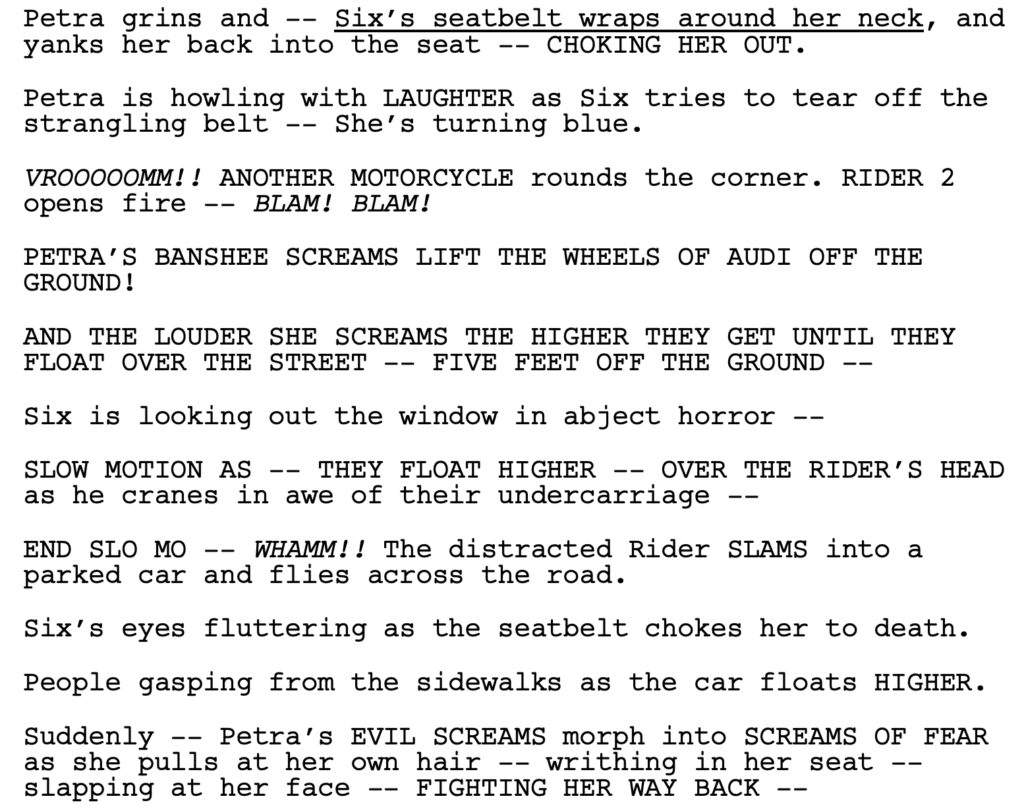
The act of reading is not unlike the act of living. People like variety. They like to work out intensely for an hour, then veg out in front of their TV for a little bit. They like to party with friends at night. They like to go on serene hikes in the mountains during the day. If you do the same thing every day all day, with zero variety, you eventually go insane!
And I realize there may be some confusion here because spec scripts are supposed to move fast. But “fast” doesn’t mean non-stop action. I can read a script with two characters falling in love that’s mostly dialogue that reads “fast.”
Yes, you want to move your plot along. But unless you add some variety to your scenes, everything starts to look the same. Predictability is a script-killer. It really is. The second the reader knows where things are going to be 10 pages from now, and 10 pages after that, and 10 pages after that, that’s when they check out. Because what’s the reason to keep reading if you already know what’s going to happen?
Now are there “all-action” movies that work? Yeah, sure. Mad Max Fury Road comes to mind. But just because a handful of movies have pulled off the impossible over the last 75 years doesn’t mean you’re going to be able to do it.
With that said, I do like strange genre combinations. I don’t know many action movies that include witchcraft. And I actually think it’s pretty cool to mix those two things. Bannon could’ve even gone further, in my opinion, and made Six a witch. A witch assassin would be awesome. But whether she’s a witch or not, it doesn’t fix Bannon’s blind spot, which is that the script is all chaos all the time. We need some cool down periods and we need more variety. Until that happens, I will always be in conflict with Bannon’s scripts.
[ ] What the hell did I just read?
[x] wasn’t for me
[ ] worth the read
[ ] impressive
[ ] genius
What I learned: I love it when writers use time-tested movie moments, then take the piss out of them. How many times have we seen, for example, a character about to kill another character, that character freeze before they can kill them, then fall over dead to reveal another character behind them who’s just killed them? If you’re going to put those moments in your script, look for ways to either have fun with them or do something a little different. Here, Bannon tackles a very familiar moment we’ve seen in a lot of movies, and adds an unexpected funny twist to it…
